#angular.js developers
Explore tagged Tumblr posts
Text
Hire Angular JS Developer | Angular JS Development Services
0 notes
Text
Node JS Vs Angular: Overview & Fundamental Differences
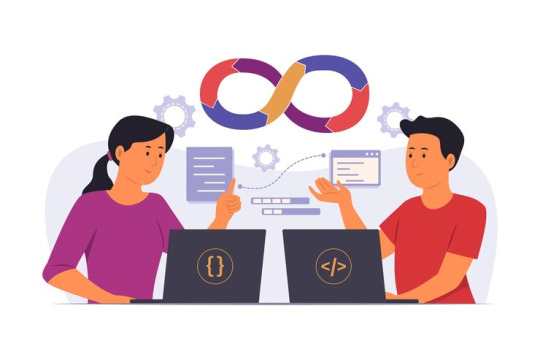
Both Angular and Node JS are popular web development platforms with distinct applications and advantages. Businesses can choose amongst them for development initiatives with greater knowledge if they are aware of their basic distinctions. Let's explore the main distinctions between Angular and Node JS.
This comprehensive comparative analysis will help businesses hire Angular.js developers or Node JS developers.
Overview of Node JS
A runtime environment called Node JS allows developers to run JavaScript code on the server side. It uses the V8 Javascript engine from Google, and hence, it improves the speed of code execution. This event-driven, non-blocking architectural paradigm has earned Node JS the reputation of being an extremely scalable and reliable choice for developing real-time web apps and APIs.
- Key Points about Node JS:
1. JavaScript runtime environment server-side.
2. An event-driven architecture that is non-blocking.
3. Perfect for developing real-time, robust applications and APIs.
4. Makes use of JavaScript on the server and client sides.
Overview of Angular
Google, on the contrary, created and maintains the front-end framework Angular. It is a client-side programming framework that is particularly intended for developing interactive single-page web applications. Angular, having the Model-View-Controller (MVC) architecture, therefore acquires several potent features, which are dependency injection, two-way data binding, and modular development. If you hire dedicated Angular developers, these features can easily be integrated into projects.
- Key Points about Angular:
1. Front-end framework for building SPAs.
2. Follows the Model-View-Controller (MVC) architecture.
3. Offers two-way data binding and dependency injection.
4. Ideal for building interactive and dynamic web applications.
Angular Vs Node JS: Fundamental Differences
1. Purpose and Focus:
- Server-side programming, including backend logic, APIs, and database operations, is the main focus of Node JS.
- Angular is designed with client-side programming, data binding, user interface management, and browser interactions in consideration.
2. Syntax and Language:
- JavaScript is the main language stack that is used equally on both sides of a client and server, respectively, in Node JS.
- TypeScript, a JavaScript superset, is used by Angular to provide additional features like static typing for developing reliable applications.
3. Building Design:
- Node JS has a non-blocking, event-driven paradigm that enables the management of multiple connections simultaneously.
- Like various other frameworks, Angular adheres to the MVC design pattern, which divides code into controllers (logic), views (user interface), and models (data). This approach encourages modularity and maintainability.
4. Development Scope:
- Backend services, APIs, real-time applications (such as messaging applications and streaming services), and server-side scripting can all be developed using Node.js.
- SPAs, business apps, dynamic dashboards, and intricate user interfaces with a wealth of features can all be developed using Angular.
5. Ecosystem and Tooling:
- A large community of npm packages, modules, and tools for server-side development, testing, and deployment exists for Node.js.
- To improve efficiency and code organization, Angular offers a full CLI (Command Line Interface) for front-end development, in addition to frameworks, components, and modules.
Conclusion
To sum up, Node JS and Angular have different uses in web development; Node JS is more concerned with server-side logic, whilst Angular is more interested in client-side interaction. While companies seeking Node.js development services should focus on backend features and scalability, those trying to hire Angular developers should think about the frontend components of their projects. Businesses can successfully utilize the capabilities of Node JS and Angular in their development operations by comprehending these basic contrasts.
0 notes
Text
Angular.JS Development Services in Canada
Devstree Canada empowers businesses with transformative Angular.js development services in Canada. Harnessing the capabilities of Angular.js, we craft dynamic and feature-rich web solutions that elevate your web applications to new heights. Trust our expertise to enhance user experiences and drive success in the digital realm.
WebPage | Angular.JS Development Services
0 notes
Text
Transforming Businesses with DI Solutions: Innovative IT Expertise
Transform your business with DI Solutions

In the ever-evolving digital landscape, businesses must harness cutting-edge technology to remain competitive. At DI Solutions, we specialize in driving business transformation through advanced IT solutions and expert services. Our dedication to innovation and excellence has empowered numerous clients to achieve their goals and excel in their industries.
Innovative IT Solutions DI Solutions excels in providing tailored IT solutions that meet each client's unique needs. Our services include custom software development, mobile app creation, web development, and UI/UX design. By leveraging the latest technologies, we deliver state-of-the-art solutions that enhance growth and efficiency.
Expert Team of Professionals Our team consists of highly skilled professionals—creative designers, experienced developers, and strategic problem-solvers. We emphasize continuous learning to stay at the forefront of industry trends and technological advancements, ensuring that our clients receive the most effective and innovative solutions.
Global Reach and Impact
With over a decade of experience, DI Solutions has made a significant impact globally, partnering with more than 120 clients across North America, Europe, Asia, and Australia. Our extensive global presence demonstrates our capability to provide exceptional IT services that address diverse business needs.
Client-Centric Approach
At DI Solutions, clients are central to our mission. We take the time to understand their business objectives, challenges, and requirements, enabling us to deliver customized solutions that surpass expectations. Our client-centric approach ensures we provide not just what is needed but what drives success and growth.
Comprehensive IT Services
Our service offerings include:
Custom Software Development: Tailored software solutions for optimal efficiency and performance.
Mobile App Development: Innovative mobile applications for Android and iOS platforms.
Web Development: Expert web development to create responsive and user-friendly websites.
UI/UX Design: Engaging user interfaces that enhance the overall user experience.
Quality Assurance: Rigorous testing to ensure the highest quality standards.
DevOps Services: Streamlined operations through integrated cultural philosophies, practices, and tools.

Join Hands with DI Solutions
Partner with DI Solutions to harness the power of innovative IT expertise. Whether you’re a startup aiming to establish a presence or an established business seeking new heights, we have the solutions and expertise to propel you forward.
For more information, visit our website or contact us directly. Let’s embark on a journey of transformation and growth together.
Transform your business with DI Solutions – where innovation meets excellence.
Contact Us Website: https://disolutions.net/ Email: [email protected] , Call: 91-9904566590 , B-301, 307, 406 Apex Commercial Center, Varachha Road, Nr. Yash Plaza, Surat, Gujarat,India-395006.
youtube
#disolutions #DI Solutions #Hire Angular.js Developers #Hire React.js Developers #Hire Vue.js Developers #Hire UI/UX Developers #Hire .NET Developers #Hire Node.js Developers #Hire Laravel/PHP Developers #Hire Android Developers #Hire IOS Developers #Hire Ionic Developers #Hire React Native Developers #Hire Full Stack Developers #Hire MERN Stack Developers #Hire MEAN Stack Developers #Mobile App Development #Web Development #UI/UX Design #Quality Assurance #DevOps Services
2 notes
·
View notes
Text
Frontend Technologies (React.js and Angular.js)
Ever since the advent of the world wide web, technologies have been researched and created to streamline the creation of Web pages that are displayed to a client upon the client's request. These web pages began by being static and non-interactive with the use of basic HTML and CSS. After awhile, the Javascript programming language stormed the world of web applications and brought a layer of interactivity, finesse, and dynamism to web applications. Since then, more technologies, most of which are built on the basic initial technologies, have come out. Two of the most popular and effective technologies are React.js and Angular.js. In this article, an attempt would be made to highlight the differences in these technologies and what makes them unique and powerful.
Firstly, React.js is built on Javascript and produced and managed by Meta while Angular is also built on TypeScript but it was produced and managed by Google.
React is a Javascript library while Angular is a framework.
React makes use of a "templating langauge" called JSX to extend Javascript into HTML and it is rendered in the server side while Angular extends the functionality of HTML by adding more attributes like "ng-bind" and it is client side rendered.
React works by using a virtual DOM, while Angular uses the real DOM.
React is a highly scalable library because of the reusability of its components while Angular is less Highly scalable.
Having itemised these differences, they each have their strengths and what makes developers prefer one over the other. React has support for mobile App development, reusability and predictability of code, one can learn it really fast Etc. Angular has faster server side rendering, fewer lines of code, takes time to learn, Etc.
I specifically prefer React to Angular which is why I am glad that React is being used in the HNG internship https://hng.tech/internship where I am currently interning. I have used React to build highly interactive web applications and look forward to honing my skills better as I use it for more daunting projects in the HNG internship. Check out HNG on their website https://hng.tech/premium
2 notes
·
View notes
Text
Mastering Fullstack Development: Unifying Frontend and Backend Proficiency
Navigating the dynamic realm of web development necessitates a multifaceted skill set. Enter the realm of fullstack development – a domain where expertise in both frontend and backend intricacies converge seamlessly. In this comprehensive exploration, we'll unravel the intricacies of mastering fullstack development, uncovering the diverse responsibilities, essential skills, and integration strategies that define this pivotal role.

Exploring the Essence of Fullstack Development:
Defining the Role:
Fullstack development epitomizes the fusion of frontend and backend competencies. Fullstack developers are adept at navigating the entire spectrum of web application development, from crafting immersive user interfaces to architecting robust server-side logic and databases.
Unraveling Responsibilities:
Fullstack developers shoulder a dual mandate:
Frontend Proficiency: They meticulously craft captivating user experiences through adept utilization of HTML, CSS, and JavaScript. Leveraging frameworks like React.js, Angular.js, or Vue.js, they breathe life into static interfaces, fostering interactivity and engagement.
Backend Mastery: In the backend realm, fullstack developers orchestrate server-side operations using a diverse array of languages such as JavaScript (Node.js), Python (Django, Flask), Ruby (Ruby on Rails), or Java (Spring Boot). They adeptly handle data management, authentication mechanisms, and business logic, ensuring the seamless functioning of web applications.
Essential Competencies for Fullstack Excellence:
Frontend Prowess:
Frontend proficiency demands a nuanced skill set:
Fundamental Languages: Mastery in HTML, CSS, and JavaScript forms the cornerstone of frontend prowess, enabling the creation of visually appealing interfaces.
Framework Fluency: Familiarity with frontend frameworks like React.js, Angular.js, or Vue.js empowers developers to architect scalable and responsive web solutions.
Design Sensibilities: An understanding of UI/UX principles ensures the delivery of intuitive and aesthetically pleasing user experiences.
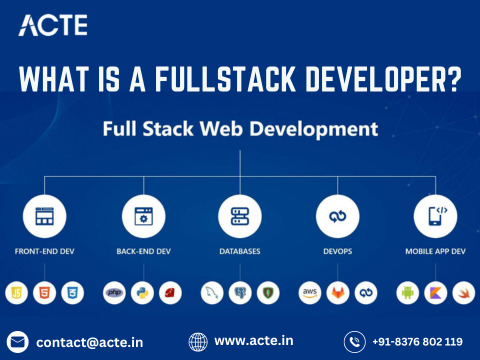
Backend Acumen:
Backend proficiency necessitates a robust skill set:
Language Mastery: Proficiency in backend languages such as JavaScript (Node.js), Python (Django, Flask), Ruby (Ruby on Rails), or Java (Spring Boot) is paramount for implementing server-side logic.
Database Dexterity: Fullstack developers wield expertise in database management systems like MySQL, MongoDB, or PostgreSQL, facilitating seamless data storage and retrieval.
Architectural Insight: A comprehension of server architecture and scalability principles underpins the development of robust backend solutions, ensuring optimal performance under varying workloads.
Integration Strategies for Seamless Development:
Harmonizing Databases:
Integrating databases necessitates a strategic approach:
ORM Adoption: Object-Relational Mappers (ORMs) such as Sequelize for Node.js or SQLAlchemy for Python streamline database interactions, abstracting away low-level complexities.
Data Modeling Expertise: Fullstack developers meticulously design database schemas, mirroring the application's data structure and relationships to optimize performance and scalability.
Project Management Paradigms:
End-to-End Execution:
Fullstack developers are adept at steering projects from inception to fruition:
Task Prioritization: They adeptly prioritize tasks based on project requirements and timelines, ensuring the timely delivery of high-quality solutions.
Collaborative Dynamics: Effective communication and collaboration with frontend and backend teams foster synergy and innovation, driving project success.
In essence, mastering fullstack development epitomizes a harmonious blend of frontend finesse and backend mastery, encapsulating the versatility and adaptability essential for thriving in the ever-evolving landscape of web development. As technology continues to evolve, the significance of fullstack developers will remain unparalleled, driving innovation and shaping the digital frontier. Whether embarking on a fullstack journey or harnessing the expertise of fullstack professionals, embracing the ethos of unification and proficiency is paramount for unlocking the full potential of web development endeavors.
#full stack developer#full stack course#full stack training#full stack web development#full stack software developer
2 notes
·
View notes
Text
Exploring the Powerhouse: 30 Must-Know JavaScript Libraries and Frameworks for Web Development
React.js: A declarative, efficient, and flexible JavaScript library for building user interfaces.
Angular.js (Angular): A web application framework maintained by Google, used for building dynamic, single-page web applications.
Vue.js: A progressive JavaScript framework for building user interfaces. It is incrementally adaptable and can be integrated into other projects.
Node.js: A JavaScript runtime built on Chrome's V8 JavaScript engine that enables server-side JavaScript development.
Express.js: A web application framework for Node.js that simplifies the process of building web applications.
jQuery: A fast, small, and feature-rich JavaScript library that simplifies HTML document traversal and manipulation, event handling, and animation.
D3.js: A powerful library for creating data visualizations using HTML, SVG, and CSS.
Three.js: A cross-browser JavaScript library and application programming interface (API) used to create and display animated 3D computer graphics in a web browser.
Redux: A predictable state container for JavaScript apps, often used with React for managing the state of the application.
Next.js: A React framework for building server-side rendered and statically generated web applications.
Svelte: A radical new approach to building user interfaces. It shifts the work from the browser to the build step, resulting in smaller, faster applications.
Electron: A framework for building cross-platform desktop applications using web technologies such as HTML, CSS, and JavaScript.
RxJS: A library for reactive programming using Observables, making it easier to compose asynchronous or callback-based code.
Webpack: A module bundler for JavaScript applications. It takes modules with dependencies and generates static assets representing those modules.
Babel: A JavaScript compiler that allows developers to use the latest ECMAScript features by transforming them into browser-compatible JavaScript.
Jest: A JavaScript testing framework designed to ensure the correctness of your code.
Mocha: A feature-rich JavaScript test framework running on Node.js and in the browser.
Chai: A BDD/TDD assertion library for Node.js and the browser that can be paired with any testing framework.
Lodash: A modern JavaScript utility library delivering modularity, performance, and extras.
Socket.io: A library that enables real-time, bidirectional, and event-based communication between web clients and servers.
GraphQL: A query language for APIs and a runtime for executing those queries with your existing data.
Axios: A promise-based HTTP client for the browser and Node.js, making it easy to send asynchronous HTTP requests.
Jasmine: A behavior-driven development framework for testing JavaScript code.
Meteor.js: A full-stack JavaScript platform for developing modern web and mobile applications.
Gatsby.js: A modern website framework that builds performance into every website by leveraging the latest web technologies.
Chart.js: A simple yet flexible JavaScript charting library for designers and developers.
Ember.js: A JavaScript framework for building web applications, with a focus on productivity and convention over configuration.
Nuxt.js: A framework for creating Vue.js applications with server-side rendering and routing.
Grunt: A JavaScript task runner that automates common tasks in the development process.
Sass (Syntactically Awesome Stylesheets): A CSS preprocessor that helps you write maintainable, scalable, and modular styles.
Remember to check each library or framework's documentation and community support for the latest information and updates.
4 notes
·
View notes
Text
IN-Manager – D365 CRM Technical _MS Dynamics_Advisory_Hyderabad
like Node.js, Angular.js, React.jsJQuery, CSS, HTML 5, AJAX Developing REST APIsIntegration experience with external systems…) Mandatory skill sets – Dynamics 365 CRM Technical *Preferred skill sets- Node.js, Angular.js, React.jsJQuery, CSS, HTML 5… Apply Now
0 notes
Text
Front End Development Company in Pune
Looking for a reliable front end development company? Associative in Pune, India offers cutting-edge front-end solutions using React.js, Vue.js, and more to build engaging digital experiences.
Delivering Exceptional Front-End Experiences: Associative's Commitment to Excellence
In today’s fast-paced digital world, your user interface is your brand's first impression. At Associative, we specialize in creating dynamic, interactive, and responsive front-end experiences that captivate users and deliver results. As a trusted front end development company based in Pune, India, we blend design with functionality to build seamless digital products.
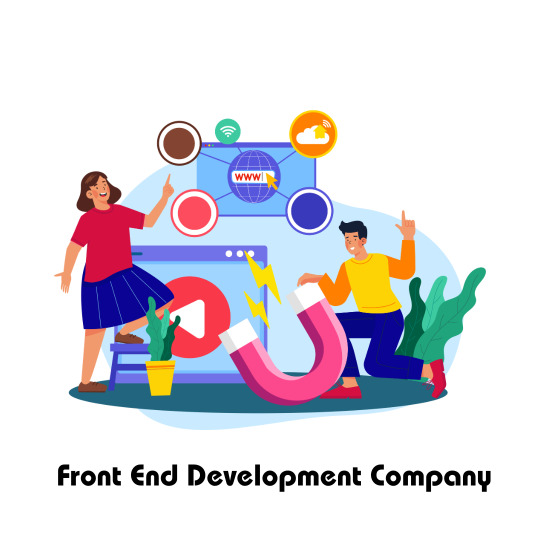
What Sets Associative Apart in Front-End Development?
With a dedicated team of UI/UX experts and front-end developers, Associative ensures pixel-perfect designs that work flawlessly across all devices. Whether it's a landing page, a scalable web platform, or an enterprise dashboard, we bring clarity, speed, and visual appeal to the forefront of every project.
Our front-end tech stack includes:
React.js, Vue.js, Angular.js
HTML5, CSS3, JavaScript, TypeScript
TailwindCSS, Bootstrap, SASS
GSAP for animation-rich interfaces
We prioritize accessibility, performance, and SEO to ensure every product we deliver not only looks great but also performs exceptionally.
Full-Service Development Beyond the Front-End
Associative is more than just a front-end development company. We offer complete software development services under one roof:
Mobile App Development (Android & iOS)
Website & E-commerce Development (Magento, Shopify, WordPress, and more)
Backend Technologies (Node.js, Java Spring Boot, PHP, Laravel, etc.)
Game Development and Blockchain Solutions
Cloud Deployment using AWS and GCP
Digital Marketing and SEO
Our team leverages the power of modern technologies to support every layer of your product—from visual design to complex backend systems.
Why Businesses Choose Associative
Proven track record in delivering successful UI/UX-focused projects
Transparent communication and agile project management
Cross-platform compatibility and mobile responsiveness
Performance-optimized code and SEO-friendly design
Customized solutions for startups, SMEs, and enterprises
Partner with Associative for Next-Level Front-End Development
Whether you’re building a new product or revamping an existing one, choosing the right front end development company is crucial. Associative’s front-end team in Pune combines creativity with technical expertise to help you stand out in a crowded digital market.
youtube
0 notes
Text
Looking for a good book on Angular.js? This is a book we liked and exclusively covering its review on our website.Pro AngularJS(By: Adam Freeman )Also known as Angular or Angular.js, AngularJS is a leading open-source web application framework that is used primarily for building dynamic JavaScript single-page applications.With increasing popularity of the framework, it has become necessary to understand the salient features for programming any software. Written by Adam Freeman, this is one of the best books on the topic that offers comprehensive information about the Angular.js framework.The 1st part of the book offers a step-by-step process to build a real application while it offers information about various features. This section also offers an introduction to JavaScript, CSS, and HTML for beginners.The second and third part of the book offers information regarding various features and their use. Adam Freeman is an experienced IT professional, who is now retired after working in many senior positions such CEO and Chief Technology Officer at a global bank.Who Should Read This Book?As per the author, this book is primarily targeted towards web developers with functional knowledge of CSS, HTML, and JavaScript. As the books start with the introduction and building of an actual application, this book is good for readers who have set up the required environment and are ready to start building an application. This book is also a good option for the people who believe in learning with a practical demonstration about how to create dynamic and rich web apps by using AngularJS and how to customize and extend this framework. This book is also targeted towards those developers who are involved in testing, refining, and deployment of AngularJS projects in any organization.What Is Good In This Book?As per the author, this book is primarily targeted towards web developers who have some functional knowledge regarding the development of websites. This book starts with the steps for building an online application, specifically an online sports store; however, the web developer can start building an online application similar to a sports store and include various features as required. The other parts of the book take up these features again one by one and explain their use with suitable examples. In this way, the book offers both practical and theoretical knowledge of AngularJS for readers.The author starts with MVC pattern concepts and its benefits with separation of presentation code, data, and logic. He further shows how to use various AngularJS features for the production of professional-quality results. The author carefully unwraps the nuts-and-bolts of the software framework in order to build an actual application.The language of the book is very easy, concise and includes detailed information to avoid common problems. The building of an actual application enhances the confidence of the learner and increases his or her thirst to know more. The author fulfills this desire by taking up every feature topic by topic, in other sections of the book.What Is Not So Good In This BookThe author has used many pre-installed programs such as Deployd, MongoDB, and NodeJS while describing the process of creating a new application. However, the Deployd environment is defunct in the software world today.The author mentions this fact but does not give an alternative. In most cases, the student is unable to install or run Deployd environment or it takes a lot of time. Also, most other software books define various features of the software first, and then they go on to build an application. However, this book reverses the order. Some people who like to learn in a sequential manner way do not appreciate this method.Although this book does not use a conventional method to teach AngularJS to readers, it uses an innovative and effective method to teach this software framework. AngularJS is one of the upcoming open-source web applications much in demand in the software world.
For the web developer who has functional knowledge of web designing languages such as CSS and HTML, this is one of the ideal books to buy, for developing dynamic web applications.
0 notes
Text
Mastering full stack development course
Are you ready to launch your career in web development? The demand for skilled developers is at an all-time high as businesses increasingly rely on web-based solutions. In order to succeed in this ever-changing field, a Full-Stack Developer Course with Placement can equip you with the necessary skills and career opportunities. From mastering key technologies to securing job placements, this expert guide will walk you through everything you need to know about becoming a full-stack developer. You'll have a clear plan for getting started in full-stack development by the end of this tutorial.
Step 1: Recognize the Functions of a Full-Stack Developer:
A full-stack developer is responsible for designing, developing, and maintaining applications on both the client and server sides. This requires collaborating with Technologies for the front end (such as user interface design and interaction) Back-end development (administration of databases and logic on the server) Data storage and retrieval databases Deployment & DevOps (hosting and scaling applications)
You can manage entire web projects as a professional when you master full-stack development.
Step 2: Master the Essential Technologies:
A structured full-stack development course will cover a broad range of tools and technologies.
What you need to know is as follows:
1. Front-End Development:
HTML, CSS, and JavaScript are the building blocks of interactive web design. Frameworks and Libraries: For creating cutting-edge applications, learn React.js and Angular.js. Responsive Web Design—Ensure your applications work on all devices using Bootstrap and CSS Flexbox/Grid.
2. Final Development Express:
JS and Node.js make server-side applications that are quick and scalable. Programming Languages— Become proficient in Java, Python, or PHP (depending on your preferred stack).
Learn how to build and manage RESTful APIs to connect front-end and back-end systems in API Development.
3. Management of databases
Ø SQL databases: MySQL and PostgreSQL are
Ø NoSQL Databases: Firebase, MongoDB
Ø Database Optimization and Design: Learn how to structure and optimize databases for efficiency
4. Implementation and DevOps
Version Control: Git and GitHub can be used to manage changes to code and work with teams.
Hosting and Cloud Services: Discover AWS, Docker, and CI/CD pipelines for a streamlined deployment.
Server Management: Configure and manage servers effectively to keep applications running smoothly.
Step 3: Get Real-World Experience:
The most important factor in mastering full-stack development is practical experience. Here’s how you can gain real-world experience:
Build Projects: Work on personal or freelance projects to apply your skills.
Contribute to open source: Join GitHub projects to collaborate with other developers.
Work on Internships: Apply for internships or apprenticeships to gain industry exposure.
Step 4: Leverage Placement Assistance to Secure a Job
The placement assistance provided by leading institutions is one of the greatest advantages of enrolling in a Full-Stack Developer Course. Here’s how you can maximize these services:
Resume Building Workshops: Craft a strong resume that highlights your skills and projects.
Mock Interviews & Career Guidance: Get expert feedback to improve your interview performance.
Opportunities for Networking: To broaden your professional network, go to tech meetups, alumni meetups, and industry events.
Support for Job Placement: To assist students in securing full-time employment, numerous training establishments have partnerships with leading tech companies.
Who Should Take This Course?
A Full-Stack Developer Course is ideal for:
Students & Fresh Graduates: Start your journey in the IT industry.
Working Professionals: Transition into web development from another field.
Entrepreneurs and freelancers: Create your own applications without employing a team
Career changers: Follow a planned learning path into the tech industry.
Why Choose a Full-Stack Developer Course?
There are numerous advantages to taking a Full-Stack Development Course, including
Affordable Training Programs: Quality education without the high costs of traditional degrees.
Growing IT Job Market: A rising demand for skilled developers.
Industry-Aligned Curriculum: Stay updated with the latest trends in web development.
Supportive Learning Environment: A large group of tech aficionados and instructors.
Final Thoughts:
Take Your Career to the Next Level Becoming a full-stack developer is one of the best careers moves in today’s tech-driven world. You can build high-quality applications, get high-paying jobs, and grow your career exponentially with the right training and hands-on experience.
“Get started today on your journey to becoming an expert full-stack developer!”
#fullstackdevelopercourseincoimbatorewithplacement#bestfullstackdevelopercourseincoimbatore#fullstackdevelopmenttrainingincoimbatore#javafullstackdevelopercourseincoimbatore#pythonfullstackdevelopercourseincoimbatore#fullstackwebdevelopmentcoursedetails#webdevelopmentcoursecoimbatore#advancedwebdevelopmenttrainingcoimbatore#learnfullstackwebdevelopmentintamil
0 notes
Text

How to Become a Full-Stack Developer
Full Stack Developers are in demand, and there’s a tech industry boom. Full stack developers, they know how to do both front-end and back-end work, so they are a huge asset to companies. This article should help you navigate on the path how to become a Full Stack Developer, if you are looking to kick-start your career in web development.
What Exactly is a Full Stack Developer?
Full Stack Developer Design and develop complete web applications, client-side (front-end) and server-side (back-end). They seamlessly integrate different technologies for a smooth user experience.
Key Responsibilities
Build those front-end UI using HTML, CSS and JavaScript OR use frameworks like React or Angular for development.
Do back-end development using stuff like Node.js, Python, PHP, or Java.
Work with databases (MySQL, PostgreSQL or MongoDB)
Take plan site responsiveness, performance, and security and API integration
Core Skills Required
Front-End Development
HTML & CSS: The foundations of web development for creating and styling web pages
JavaScript: When you need interactivity.
Frameworks: React.js, Angular, or Vue.js speed up development.
Back-End Development
Languages: Python, Java, PHP, Node.js for server-side coding.
Databases: MySQL, PostgreSQL, and MongoDB which are used for storing data.
APIs: REST, SOAP, GraphQL for exchanging data.
Version Control & Deployment
Git & GitHub: You can save your changes and make better collaboration
CI/CD pipelines: Automate testing and deployment
Cloud Platforms for hosting applications: AWS, Azure, Google Cloud.
Additional Skills
Robust Debugging and problem-solving skills.
Excellent written and verbal communication and team collaboration skills.
Familiarity with DevOps concepts, server management, and security.
Getting Started as a Full Stack Developer
Master Both Front-End & Back-End Technologies.
Learn HTML, CSS, and JavaScript First Adopt a front-end framework such as React.js or Angular.js and a back-end language like Node.js, Python, or PHP.
Build Practical Projects.
Build real world projects with these skills, for Example.
A personal portfolio website.
A simple application that performs CRUD (Create, Read, Update, Delete).
A secure e-commerce site with user authentication and payment mechanism.
Version Control & Deployment
Use Git, GitHub, and a cloud platform (AWS or Firebase) to deploy an application or collaborate with other developers.
Sign Up for a Full Stack Development Course
Enrolling in a structured learning program, such as those by Milestone Institute of Technology can help you receive practical training and mentorship to prepare you for the industry world.
Prepare A Resume and Portfolio
Push GitHub to show off your projects Write articles on places like Medium about what you are learning. Tailor your resume for a Full Stack Developer.
Search for Job/ freelance work
For full-time opportunities, utilize job portals such as LinkedIn, Glassdoor, and Indeed For freelancers, you can use Upwork and Fiverr.
Job Roles for Full Stack Developer
Web Developer
Software Engineer
Front-End Developer
Back-End Developer
DevOps Engineer
Conclusion
A Full Stack Developer need to keep learning and practice maximum. With knowledge of front-end, back-end, and database, you are on your way to becoming a successful web developer. For professional training, Milestone Institute of Technology has good courses that develop you for the industry.
0 notes
Text
Website Development in Bangalore: Why Hello Errors is the Ultimate Choice for Your Business

Bangalore, the IT capital of India, is a thriving hub for startups, enterprises, and tech-driven businesses. With digital transformation becoming essential, having a well-designed and high-performing website is crucial for any business. Website Development in Bangalore is in high demand as companies seek to establish their online presence, attract customers, and drive revenue growth.
If you're looking for Website Development in Bangalore, Hello Errors is your go-to solution. As a leading web development company, Hello Errors specializes in crafting dynamic, scalable, and SEO-friendly websites tailored to your business needs.
This blog explores why a high-quality website is essential for businesses in Bangalore, how Hello Errors delivers cutting-edge web solutions, and why they are the best choice for your web development needs.
Why Website Development in Bangalore is Crucial for Business Success
1. The Competitive Digital Landscape of Bangalore
Bangalore is home to thousands of startups, tech firms, and eCommerce businesses, making the competition in the digital space intense. Without a well-optimized website, businesses struggle to stand out in this crowded market.
A professionally developed website helps businesses:
Boost Brand Awareness – A visually appealing and functional website establishes a strong brand identity.
Enhance Customer Trust – A professional website signals credibility and builds customer confidence.
Increase Lead Generation – Optimized websites attract organic traffic and convert visitors into customers.
2. Mobile-First Approach for a Growing Digital Audience
Over 75% of internet users access websites through mobile devices. A responsive, mobile-optimized website ensures smooth navigation and an engaging user experience across all screen sizes. Website Development in Bangalore by Hello Errors ensures that businesses get mobile-friendly websites that load fast and provide seamless browsing experiences.
3. SEO-Optimized Websites for Higher Rankings
Search engines like Google prioritize websites that offer great user experiences, load quickly, and contain valuable content. An SEO-optimized website helps businesses in Bangalore rank higher, driving organic traffic and increasing visibility. Hello Errors integrates advanced SEO strategies into website development, ensuring your site stays ahead of competitors.
Hello Errors: The Leading Website Development Company in Bangalore
1. Expertise in Modern Web Technologies
Hello Errors specializes in using cutting-edge web technologies to develop high-performance websites. Their tech stack includes:
React.js & Angular.js for interactive front-end designs.
Node.js & Django for robust and scalable back-end development.
WordPress & Shopify for easy-to-manage CMS and eCommerce solutions.
AI/ML Integration for smarter user interactions and automation.
2. Custom Web Development Tailored to Business Needs
Every business has unique requirements, and a one-size-fits-all approach doesn’t work. Hello Errors offers custom Website Development in Bangalore, ensuring that each website aligns with the company’s goals and target audience.
Corporate Websites – Professional, secure, and scalable websites for enterprises.
eCommerce Platforms – High-performance online stores with integrated payment gateways.
Startup Landing Pages – Lead-generating landing pages designed for conversions.
SaaS Platforms – Web-based software solutions with cloud capabilities.
3. High-Performance & Speed-Optimized Websites
A slow website leads to higher bounce rates and lost customers. Hello Errors ensures that all websites they develop are:
Optimized for lightning-fast load speeds.
Enhanced with CDN (Content Delivery Network) integration.
Compressed and optimized for better performance.
4. User-Centric UI/UX for Enhanced Engagement
A well-designed website should be visually appealing, easy to navigate, and highly interactive. Hello Errors focuses on creating user-centric interfaces that enhance customer engagement. Their UI/UX design services include:
Minimalist yet functional layouts for intuitive navigation.
Interactive elements like animations, hover effects, and smooth transitions.
A/B testing for improving conversion rates and customer experience.
Additional Features That Make Hello Errors Stand Out
1. AI-Powered Chatbots & Automation
Customer service automation is revolutionizing digital experiences. Hello Errors integrates AI-powered chatbots and virtual assistants to:
Provide instant customer support.
Automate lead generation and inquiries.
Offer personalized recommendations for users.
2. Secure & Scalable Web Solutions
Website security is a top priority for businesses, especially those handling sensitive customer data. Hello Errors ensures:
SSL encryption for secure transactions.
Multi-layered security protocols to prevent cyber threats.
Scalable cloud-hosted solutions for business growth.
3. Integration of Emerging Technologies
Hello Errors stays ahead of the curve by integrating emerging technologies into Website Development in Bangalore. Some of the latest trends they implement include:
Voice Search Optimization – Ensuring websites are compatible with voice search queries.
Blockchain Integration – Adding extra layers of security and transparency.
Augmented Reality (AR) & Virtual Reality (VR) – Enhancing customer experiences for eCommerce and real estate platforms.
Why Businesses Choose Hello Errors for Website Development in Bangalore
✅ Industry Experience & Proven Track Record
With years of expertise, Hello Errors has worked with numerous startups, enterprises, and multinational companies to build high-performing websites. Their vast portfolio showcases their technical excellence and innovative approach in web development.
✅ End-to-End Web Development Solutions
From planning and designing to deployment and maintenance, Hello Errors provides complete Website Development in Bangalore, ensuring hassle-free execution. Their services include:
Requirement analysis & consultation.
UI/UX wireframing and prototyping.
Front-end & back-end development.
SEO optimization and digital marketing support.
Ongoing maintenance and technical support.
✅ Affordable Pricing & Flexible Packages
Hello Errors believes that high-quality Website Development in Bangalore should be accessible to all businesses, regardless of size. They offer custom pricing packages to cater to startups, SMEs, and large enterprises.
✅ Dedicated Support & Maintenance
A website requires continuous monitoring and updates to stay relevant. Hello Errors provides 24/7 customer support, regular updates, and troubleshooting assistance, ensuring your website performs optimally at all times.
Conclusion: Build Your Dream Website with Hello Errors
In the rapidly evolving digital landscape of Bangalore, having a well-optimized website is crucial for success. Whether you're a startup looking to establish an online presence or an enterprise needing a scalable website, Hello Errors is the ideal web development partner.
Why Choose Hello Errors for Website Development in Bangalore?
✔ Custom, scalable, and performance-driven websites. ✔ Advanced SEO strategies for better visibility. ✔ AI-powered automation and chatbot integration. ✔ Lightning-fast load times and enhanced security. ✔ User-friendly, engaging UI/UX designs. ✔ Affordable pricing with full-service support.
Are you ready to transform your online presence? Partner with Hello Errors today and build a website that drives growth, engagement, and revenue!
🚀 Contact Hello Errors now for the best Website Development in Bangalore!
#WebsiteDevelopment#WebDesign#WebDevelopment#SEO#DigitalMarketing#BusinessGrowth#WebsiteDevelopmentInBangalore#BangaloreTech#BangaloreStartups#BangaloreBusiness#StartupBangalore#WebDevelopmentCompany#CustomWebDevelopment#UIUXDesign#EcommerceDevelopment#AIWebDevelopment
0 notes
Text
IN_ Manager_D365 CRM Technical_MS Dynamics _Advisory_ Mumbai
like Node.js, Angular.js, React.jsJQuery, CSS, HTML 5, AJAX Developing REST APIsIntegration experience with external systems…) Mandatory skill sets – Dynamics 365 CRM Technical *Preferred skill sets- Node.js, Angular.js, React.js,JQuery, CSS, HTML 5… Apply Now
0 notes
Text
Hiring || Node.JS With Angular.JS/React.JS Professionals
Job Description : Job Role: Node.js With React.Js/Angular.Js Developer Experience: 5+ years Location: Bangalore…/Chennai Must-Have: The candidate should have 5 years of relevant experience in Node.js with React.js or Angular.js… Apply Now
0 notes
Text
Top 5 High-demand Front-end Programming Languages in Web Development World
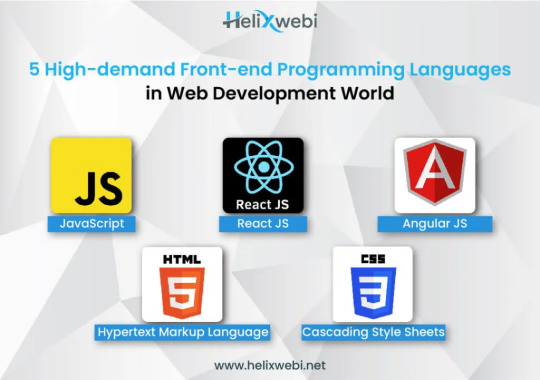
Front-end programming languages play a major role in creating the user interface or client side of the website and shaping the next level user experience. Front-end developers can find a large number of front end development languages right now in the web development world for advanced front-end development. But instead of learning coding languages randomly, they should priotize learning and mastering those in-demand front-end languages that will continue to be valuable in the upcoming years.
Learning those particular demandable languages will bring long-time success and help in better career growth. Beginners who have recently stepped into the web development world should have a look at this blog as we will share the names of the top 5 in-demand front-end coding languages in this blog.
List of In-Demand Front End Development Languages for A Better Carrier Path
As per the changing demands of users, features and functionalities of websites are becoming more advanced day by day. As a result, new trends are coming for both the front end and back end development languages. But there are some front-end programing languages that have been in the web development industry for years and will continue being the most used languages in future. Here is the list of the high-demand front end languages that are useful for a great career path.
1. HTML
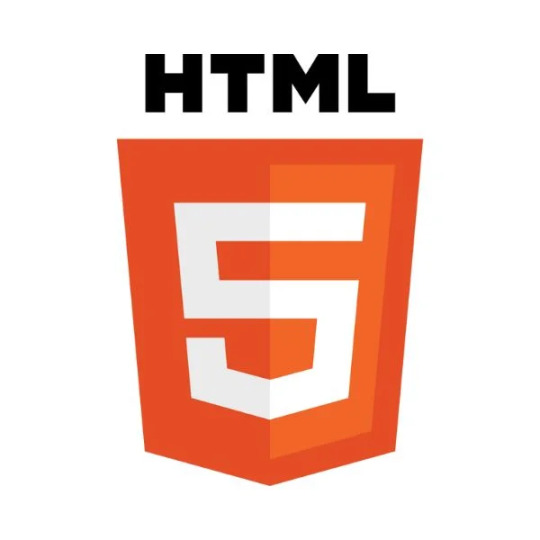
Since this language has so many applications, its demand will not decrease even a little. At the initial stage of web development, beginners can’t adopt complex and extremely advanced codings. For them, HTML is the best option to learn as it is so easy and quick to learn and doesn’t have any complex coding. Beginners can start their career with a minimum salary if they have knowledge of this coding. However, learning HTML only cannot help in getting high-paying jobs
2. REACT.JS
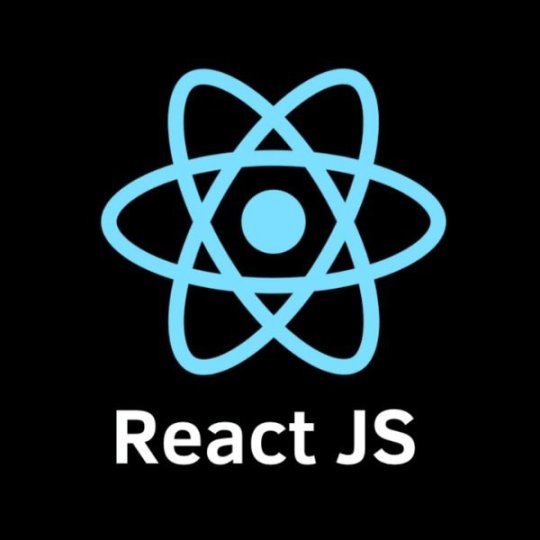
React.JS is one of the most used front-end programming languages in both the web and app development worlds right now. It is reported that React.JS will remain the key player in the upcoming years as well. React.JS improves the overall performance of the web pages, and allows developers to build dynamic websites. And the main thing about React.JS that will keep it in high demand in future also is that it helps in indexing web pages properly and quickly, and helps in making the website SEO-friendly.
Developers who will learn React.JS will get he brightest future for their career path. With the knowledge of CSS language, one can get employed as a UI designer, React Native Developer, React Engineer, and so on.
3. CSS
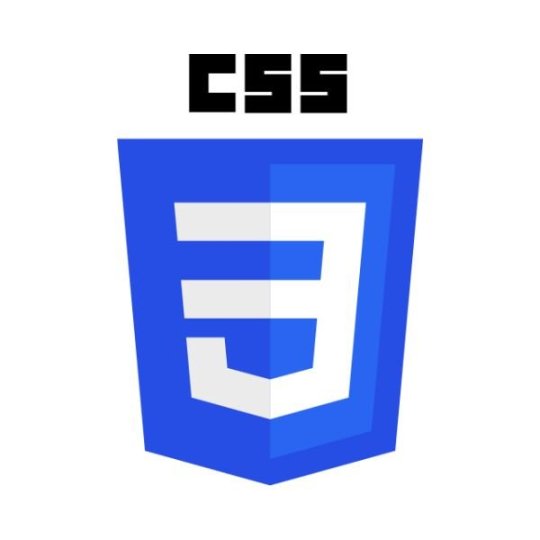
No matter how much complex a website is, CSS makes it extremely easy-to-navigate for users. Not only a front-end developer, with CSS skills, one can get more successful career options like Full Stack Developer, Software Developer, Web designer, and so on.
4. ANGULAR.JS
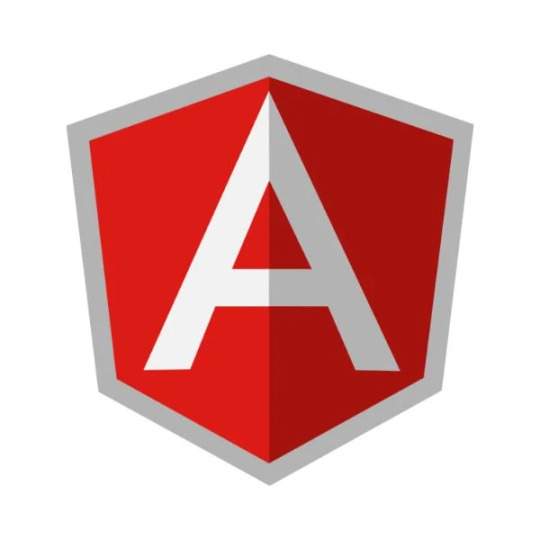
Angular.JS is not a language but an open-source JavaScript framework for front end web development. Angular.JS came into the web development world in 2009 and since then it has gotten so many updates that made it one of the cutting-edge tools for web development. It is high in demand because of its ability to build scalable web applications with the best performance, it helps in creating complex but lightweight web apps, and so on. Beginners can master this one without much effort as lesser coding is required for Angular.js. One can get a handsome early income as an Angular.JS developer.
5. JAVASCRIPT
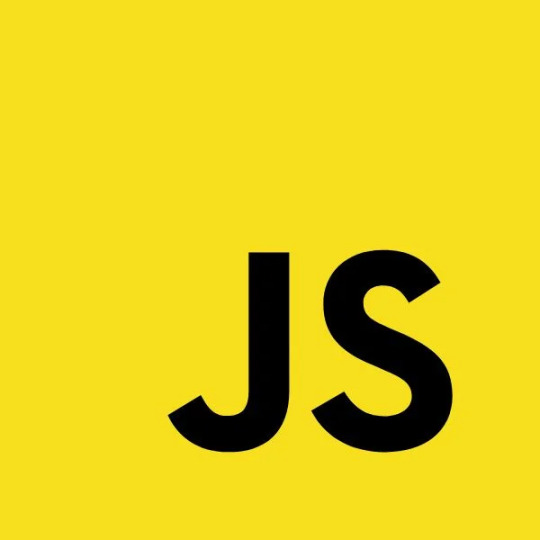
One can create pop-up windows, add animations, drop down menus and more advanced features to the web pages using JavaScript language. Demand for Javascript experts is extreme in the market and it will not decrease in the upcoming future. One can get various job opportunities as a javascript expert such as Full-stack developer, Front-end Developer, Back-end Developer, .NET Developer, Software Developer, Game Developer, and more.
Final Words
Want to start your career in Front-end development? Then start learning all these high-demand front end web languages that we mentioned above. You will never face career issues or never fear of losing jobs suddenly if you will master these front-end programming languages because they are never going to be backdated in the market.
0 notes